Research
Research in the ECS group is guided by the question of how we can learn from empirical data. In consequence, much of our work is centered around Statistics & Research methods. The main content-area we work on is biological information processing in humans, but we also have worked on applying statistical and machine-learning methods to technical systems (e.g., to solar thermal systems). Below find a sketch of some typical questions we have been working on. For a more fine-grained and complete view, please visit our publication pages.
Main funding sources are currently the DFG collaborative research center Robust Vision, the research unit Modal and Amodal Cognition, and the excellence cluster Machine Learning: New Perspectives for Science.
Biological information processing
Two visual systems or one?
-
Bhatia, K., Osenberg, A., Janczyk, M., & Franz, V. H.
(2025).
Reviewing evidence for the perception-action model from
Garner interference.
Journal of Experimental Psychology: Human Perception and
Performance, 51(2), 217--242.
[ DOI |
Website |
PDF |
Pre-registrations: 1 |
2 |
3 |
Open materials & data |
Abstract ]
-
Bhatia, K., Löwenkamp, C., & Franz, V. H.
(2022).
Grasping follows Weber's law: How to use response
variability as a proxy to JND.
Journal of Vision, 22(12), 1--27.
[ DOI |
Website |
PDF |
Open materials & data |
Abstract ]
-
Kopiske, K. K., Bruno, N., Hesse, C., Schenk, T., & Franz, V. H.
(2016).
The functional subdivision of the visual brain: Is there a
real illusion effect on action? A multi--lab replication study.
Cortex, 79, 130--152.
[ DOI |
Website |
PDF |
Explanation of this preregistered report |
Open materials & data |
Abstract ]
-
Franz, V. H., & Gegenfurtner, K. R.
(2008).
Grasping visual illusions: Consistent data and no
dissociation.
Cognitive Neuropsychology, 25(7), 920--950.
[ DOI |
PDF |
Abstract ]
-
Franz, V. H., Gegenfurtner, K. R., Bülthoff, H. H., & Fahle, M.
(2000).
Grasping visual illusions: No evidence for a dissociation
between perception and action.
Psychological Science, 11(1), 20--25.
[ PDF |
Abstract ]
Can eyes be surprised?
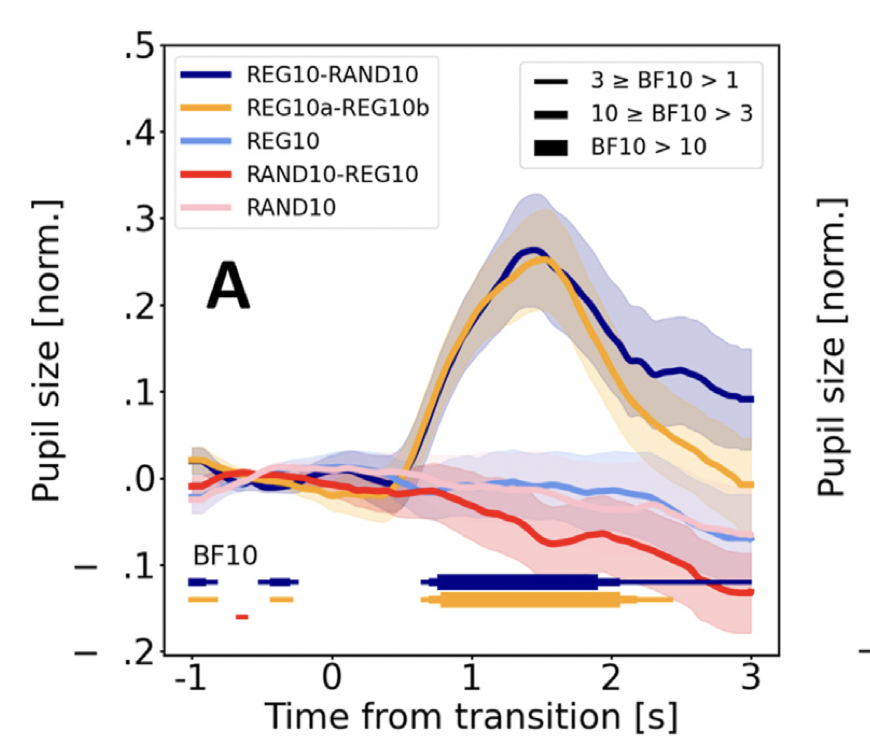
-
Basgol, H., Dayan, P., & Franz, V. H.
(2025).
Violation of auditory regularities is reflected in pupil
dynamics.
Cortex, 183, 66--86.
[ DOI |
Website |
PDF |
Pre-registration |
Open materials & data |
Abstract ]
-
Basgol, H., Dayan, P., & Franz, V. H.
(2022).
Is pupil-linked arousal a marker of model violation but not
model update?
(Poster at the European Conference on Visual Perception (ECVP 2022),
Nijmegen, the Netherlands)
[ Abstract ]
Can high-level cognitive functions be unconscious?
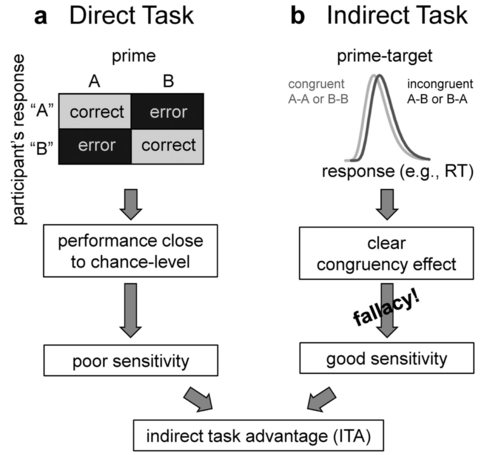
-
Streicher, J., Meyen, S., Franz, V. H., & Stein, T.
(2025).
Neural correlates of unconscious processing in fMRI: Does
brain activity contain more information than can be consciously
reported?
Neuroscience of Consciousness(1), niaf042.
[ DOI |
PDF |
Open materials & data |
Abstract ]
-
Meyen, S., Vadillo, M. A., von Luxburg, U., & Franz, V. H.
(2024).
No Evidence for Contextual Cueing Beyond Explicit
Recognition.
Psychonomic Bulletin & Review, 31, 907--930.
[ DOI |
Website |
PDF |
Pre-registration |
Open materials & data |
Abstract ]
-
Meyen, S., Zerweck, I. A., Amado, C., von Luxburg, U., & Franz,
V. H.
(2022).
Advancing research on unconscious priming: When can
scientists claim an indirect task advantage?
Journal of Experimental Psychology: General, 151(1),
65--81.
[ DOI |
Ask for copy |
Preprint |
Online ITA-calculator |
Open materials & data |
Abstract ]
-
Schnepf (nee Zerweck), I. A., Friedrich, F., Hepting, C., Meyen, S.,
& Franz, V. H.
(2022).
Neural mechanisms of response priming do not support
veridical unconscious processing.
Consciousness & Cognition, 102, 103348.
[ DOI |
Website |
Ask for copy |
Abstract ]
Can humans feel when somebody is lying?
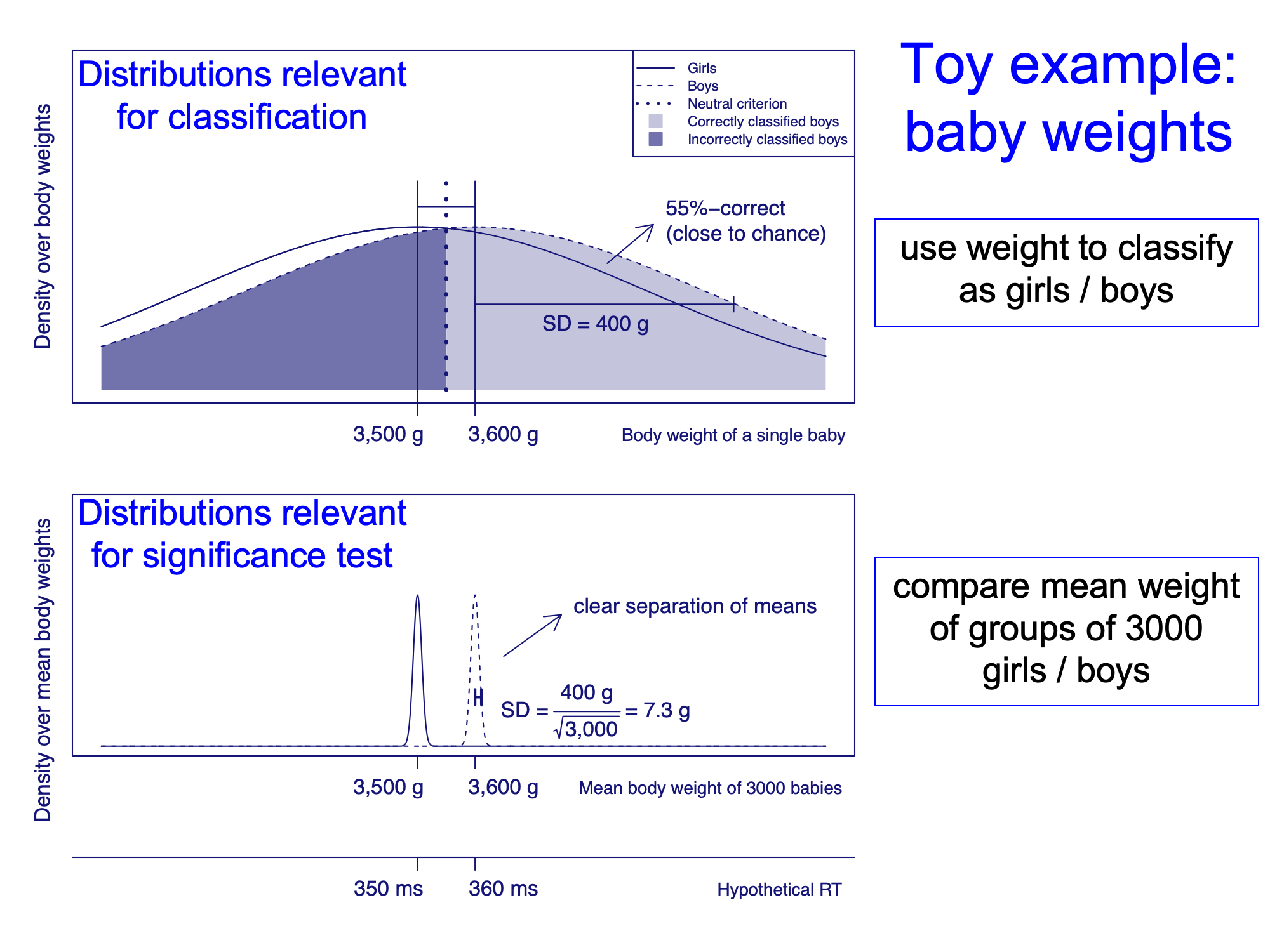
-
Franz, V. H., Meyen, S., & von Luxburg, U.
(2024).
Technical comment on Gunderson, ten Brinke, and
Sokol-Hessner (2023). When the body knows: Interoceptive accuracy enhances
physiological but not explicit differentiation between liars and
truth-tellers. Personality & Individual Differences, 204, 112039.
Personality & Individual Differences, 217, 112439.
[ DOI |
Website |
Ask for copy |
Preprint |
Open materials & data |
Abstract ]
-
Meyen, S., Zerweck, I. A., Amado, C., von Luxburg, U., & Franz,
V. H.
(2022).
Advancing research on unconscious priming: When can
scientists claim an indirect task advantage?
Journal of Experimental Psychology: General, 151(1),
65--81.
[ DOI |
Ask for copy |
Preprint |
Online ITA-calculator |
Open materials & data |
Abstract ]
-
Franz, V. H., & von Luxburg, U.
(2015).
No evidence for unconscious lie detection: A significant
difference does not imply accurate classification.
Psychological Science, 26(10), 1646--1648.
[ DOI |
Website |
PDF |
Preprint |
Open materials |
Abstract ]
-
Franz, V. H., & von Luxburg, U.
(2014).
Unconscious lie detection as an example of a widespread
fallacy in the Neurosciences.
(preprint at arXiv:1407.4240; this preprint is more comprehensive
than the corresponding Psychological Science article)
[ DOI |
Website |
Abstract ]
What is the representational format of human cognition?
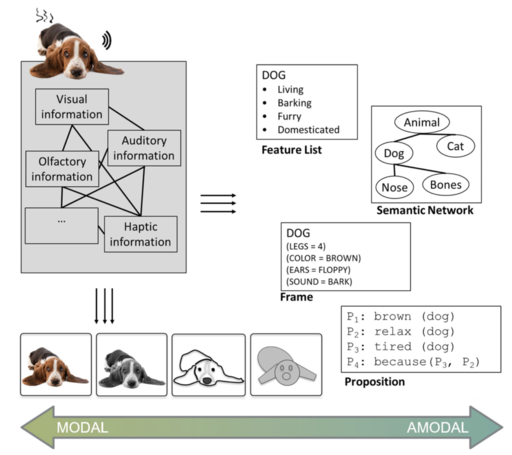
-
Kaup, B., Ulrich, R., Bausenhart, K. M., Bryce, D., Butz, M. V., Dignath, D.,
Dudschig, C., Franz, V. H., Friedrich, C., Gawrilow, C., Heller, J., Huff,
M., Hütter, M., Janczyk, M., Leuthold, H., Mallot, H., Nürk, H.-C., Ramscar,
M., Said, N., Svaldi, J., & Wong, H. Y.
(2023).
Modal and Amodal Cognition: An Overarching Principle in
Various Domains of Psychology.
Psychological Research, 1--31.
[ DOI |
Website |
PDF |
Abstract ]
-
Bhatia, K., Osenberg, A., Janczyk, M., & Franz, V. H.
(2025).
Reviewing evidence for the perception-action model from
Garner interference.
Journal of Experimental Psychology: Human Perception and
Performance, 51(2), 217--242.
[ DOI |
Website |
PDF |
Pre-registrations: 1 |
2 |
3 |
Open materials & data |
Abstract ]
-
Janczyk, M., Eichfelder, L., Liesefeld, H. R., & Franz, V. H.
(2024).
Learning and transfer of response--effect relations.
Quarterly Journal of Experimental Psychology.
[ DOI |
Website |
PDF |
Pre-registration |
Open data |
Abstract ]
-
Eichfelder, L. A., Franz, V. H., & Janczyk, M.
(2023).
Is there hierarchical generalization in response-effect
learning?
Experimental Brain Research, 241, 135--144.
[ DOI |
Website |
PDF |
Pre-registration |
Open materials & data |
Abstract ]
-
Bhatia, K., Löwenkamp, C., & Franz, V. H.
(2022).
Grasping follows Weber's law: How to use response
variability as a proxy to JND.
Journal of Vision, 22(12), 1--27.
[ DOI |
Website |
PDF |
Open materials & data |
Abstract ]
Statistics & Research methods
Information theory for cue combination in biological and technical systems
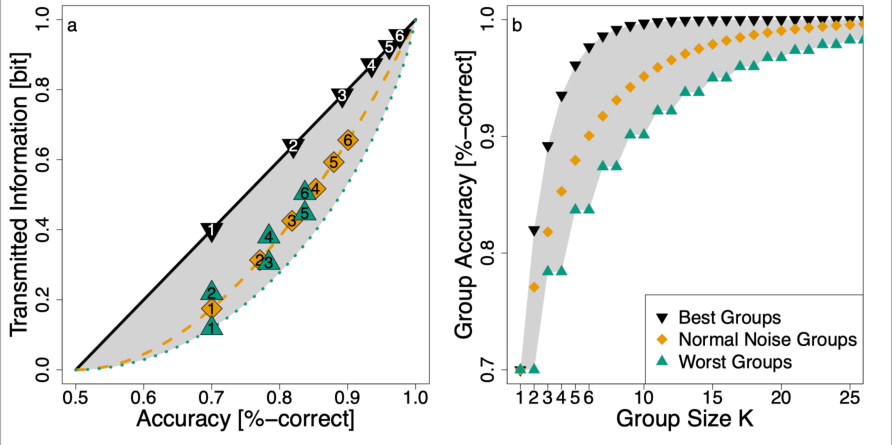
-
Meyen, S., Göppert, F., Schrenk, C., von Luxburg, U., & Franz,
V. H.
(2025).
Information--theoretic measures of metacognition: Bounds and
relation to group performance.
Open Mind, 9, 1728-1762.
[ DOI |
PDF |
Abstract ]
-
Meyen, S., Sigg, D. M. B., von Luxburg, U., & Franz, V. H.
(2021).
Group decisions based on confidence weighted majority
voting.
Cognitive Research: Principles and Implications,
6(18), 1--13.
[ DOI |
PDF |
Open materials & data |
Abstract ]
-
Meyen, S., Göppert, F., Alber, H., Luxburg, U. von, & Franz, V. H.
(2021).
Specialists Outperform Generalists in Ensemble
Classification.
(preprint at arXiv:2107.04381)
[ Website ]
Confidence intervals for within-subject designs, ratios, replications, etc.
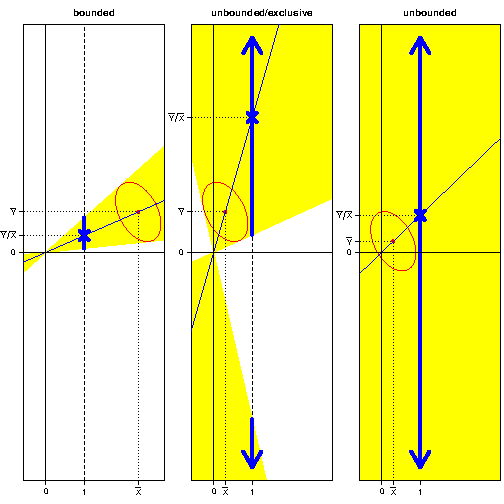
-
Göppert, F., Bhatia, K., Meyen, S., & Franz, V. H.
(2025).
Realistic expectations for replications: Expecting too
little is just as bad as expecting too much.
Advances in Methods and Practices in Psychological Science,
8(3), 1--8.
[ DOI |
PDF |
Open materials |
Abstract ]
-
Franz, V. H., & Loftus, G. R.
(2012).
Standard errors and confidence intervals in within--subjects
designs: Generalizing Loftus & Masson (1994) and avoiding biases of
alternative accounts.
Psychonomic Bulletin & Review, 19(3), 395-404.
[ DOI |
Website |
PDF |
Abstract ]
-
von Luxburg, U., & Franz, V. H.
(2009).
A geometric approach to confidence sets for ratios:
Fieller's theorem, generalizations, and bootstrap.
Statistica Sinica, 19(3), 1095--1117.
[ Website |
PDF |
Abstract ]
-
Franz, V. H.
(2007).
Ratios: A short guide to confidence limits and proper
use.
(preprint at arXiv:0710.2024)
[ Website |
Abstract ]
Frequentist vs. Bayesian tests: Which should be used?
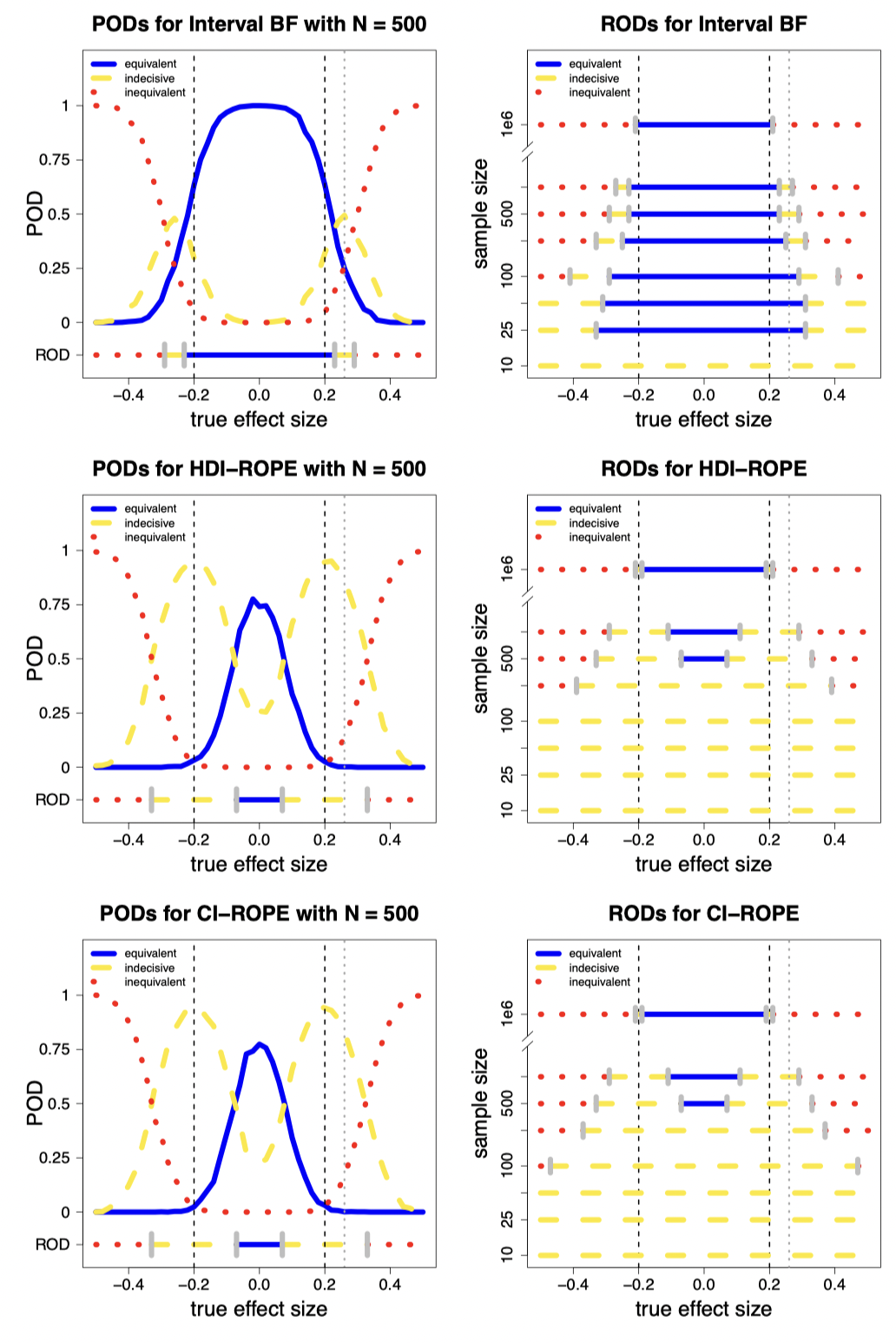
-
Göppert, F., Szillat, L., Meyen, S., & Franz, V. H.
(2025).
Is optional stopping really no problem for Bayesians?
(Poster at the 67th “Tagung experimentell arbeitender Psychologen”
(TeaP), 9.3.--12.3.2025, Frankfurt, Germany)
[ Abstract ]
-
Göppert, F., Meyen, S., & Franz, V. H.
(2024).
Comparing hypothesis tests using Regions of Support.
(Poster at the 57th Annual Meeting of the Society for Mathematical
Psychology (MathPsych), 19.07.--22.07.2024, Tilburg, Netherlands)
[ Abstract ]
What can we expect from replications?
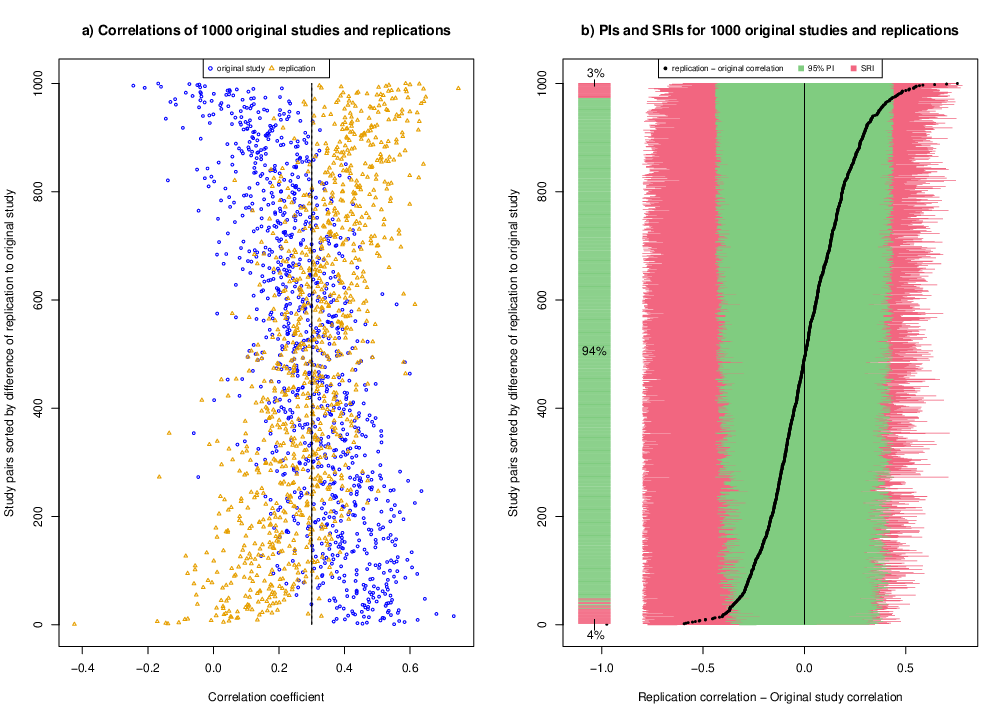
-
Göppert, F., Bhatia, K., Meyen, S., & Franz, V. H.
(2025).
Realistic expectations for replications: Expecting too
little is just as bad as expecting too much.
Advances in Methods and Practices in Psychological Science,
8(3), 1--8.
[ DOI |
PDF |
Open materials |
Abstract ]
Applications to technical systems
Using statistics & machine learning to improve solar thermal systems (and heatpumps etc.)
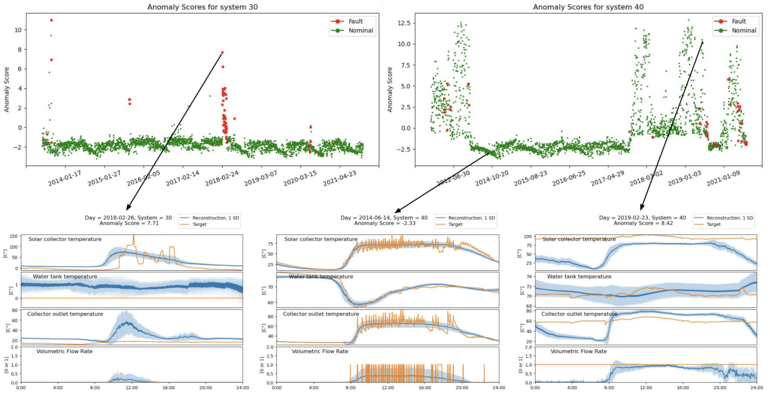
-
Ebmeier, F., Ludwig, N., Martius, G., & Franz, V. H.
(2024).
PaSTS: An operational dataset for domestic solar thermal
systems.
In Proceedings of the 15th ACM International Conference on
Future and Sustainable Energy Systems (pp. 529--534).
New York, NY, USA: Association for Computing Machinery.
[ DOI |
Website |
PDF |
Open materials & data |
Abstract ]
-
Ebmeier, F., Ludwig, N., Thuemmel, J., Martius, G., & Franz, V. H.
(2024).
Fault Detection in Solar Thermal Systems using Probabilistic
Reconstructions.
(Poster at European Geosciences Union (EGU) General Assembly,
14.4.--19.4.2024, Vienna, Austria)
[ Abstract ]
-
Ebmeier, F., Ludwig, N., Thuemmel, J., Martius, G., & Franz, V. H.
(2024).
Attention-based Anomaly Detection in Solar Thermal Systems.
(Poster at EuroSun 2024 -- International Conference on Solar Energy
for Buildings and Industry, 26.8.--30.8.2024, Limassol, Cyprus)
[ Abstract ]
-
Ebmeier, F., Ludwig, N., Martius, G., & Franz, V. H.
(2022).
Fault Detection in Solar Thermal Systems Using Machine
Learning.
(Poster presented at the ISES & IEA SHC International Conference on
Solar Energy for Buildings and Industry; EuroSun2022; 25-29 September 2022;
Kassel, Germany).
[ Abstract ]
Open Science
Open data, open methods, pre-registrations, registered reports, etc.
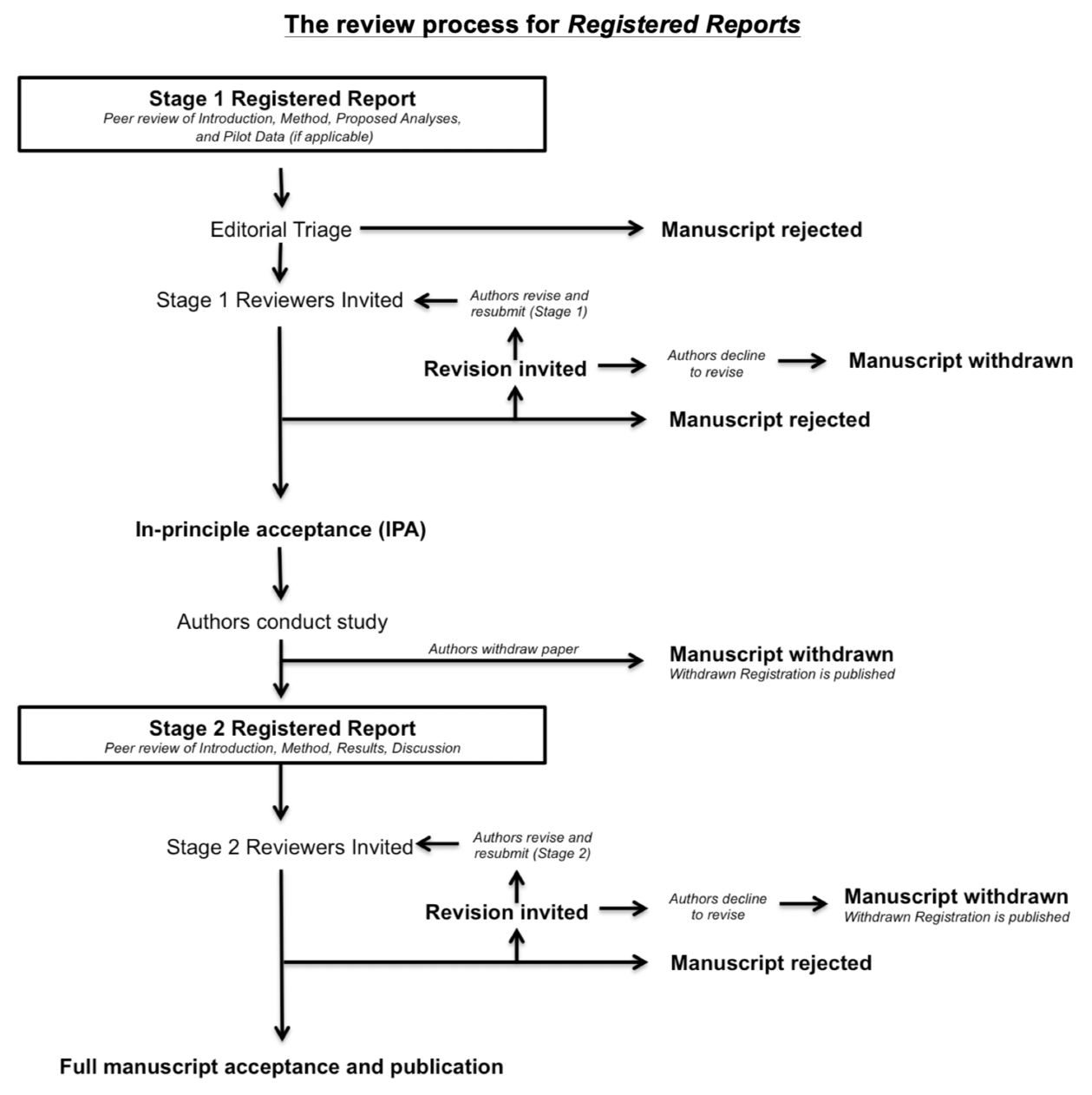
-
Franz, V. H.
(2021, February 10).
Doping in der Wissenschaft: Gegenmaßnahmen &
prä-registrierte Studien (Doping in Science: Countermeasures & Registered
Reports).
Center for Interdisciplinary and Intercultural Studies (CIIS),
Tübingen.
[ PDF |
Abstract ]
-
Franz, V. H.
(2020, November 13).
Doping in Science: Countermeasures & Registered Reports in
Psychology and the Neurosciences.
Universität Graz, Austria.
[ PDF |
Abstract ]
-
Himmelbach, M., & Franz, V. H.
(2019, January 22).
... und bin so klug als wie zuvor - Denkfallen in der
Wissenschaft.
Science Pub, Tübingen, Germany.
[ Website |
PDF |
Abstract ]
-
Kopiske, K. K., Bruno, N., Hesse, C., Schenk, T., & Franz, V. H.
(2016).
The functional subdivision of the visual brain: Is there a
real illusion effect on action? A multi--lab replication study.
Cortex, 79, 130--152.
[ DOI |
Website |
PDF |
Explanation of this preregistered report |
Open materials & data |
Abstract ]

